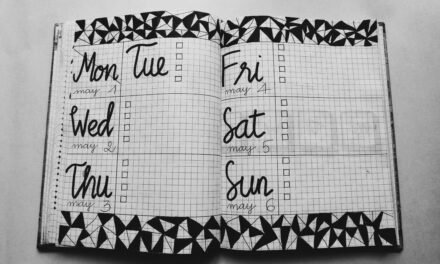
The Number 1 Reason You’re Struggling For Ideas

You want Ideas. But do you really understand, in detail, your problem? The people involved. The relationships, between people and product, or people and people. Research, research and more research. That’s what you could be missing. That’s the reason you’re struggling to come up with good Ideas.
Part 1 – Research and Insights for Ideas

This week I gave myself the task of coming up with a great birthday present for a specific person. Really it was my first ‘self-set’ challenge of improving my ideation techniques. Which before this week were non-existent! And to be completely truthful, at this moment in time, they haven’t evolved much further.
It sounds so easy to think of a birthday present. I always find the best ones come out of nowhere. Sometimes if you’re around the person often, they give you a great hint or accidentally mention something that you know is perfect. For this person, however, they are sufficiently detached where this is not possible – and of sufficient meaning that a card and money won’t cut it.
The birthday present isn’t the focus of this blog post, it is purely my means for testing any progress in ideation I am able to make. My specific pain point is the time it takes to come up with good ideas. So, you can imagine my frustration when the books I turned to, essentially told me “ideation can’t be rushed”, and “ideas must be put to the test in the real world and honed”. How do you test a birthday present?
The books I have been reading are “How to Get Great Ideas” by Dave Birss, and ”A Technique for Producing Ideas” by James Webb Young (an advertising classic).
Both were quite enlightening whilst providing methods and tips that seemed somewhat obvious. But why then have I not done them before? I think the answer is that they take an effort. I have been after a quick fix, an easy cheat code. But does that ever work? No. Of course, it doesn’t.
This time, as for anything worth doing, I’m gonna have to put in some effort here. Sigh.
Dave Birss talks of the RIGHT technique. This consists of Research, Insight, Generate, Hone, and Test. In James Webb Young’s “A Technique for Producing Ideas” there are also 5 steps – however, one key difference is his instruction to step away from the task completely mid-way through after reviewing much material on the matter.
Both mention how new ideas are nothing more than a new combination of old ideas and the importance of creating links between well-established facts and key information.
After reading through some of these books, and admittedly reading the summaries on Google (I’m a slow reader), It’s now time to ‘Generate’ as Dave Birss puts it. So that is what this next week is for. To test these new methods and principles of Idea creation and report back. This is gonna be one hell of a Birthday present…
PART 2 – The Ideas and Failure

So, the birthday has been and gone. And the present I got was far from an ingenious idea. A voucher. And I tried. I really did. I have my notepad as proof. 4 full pages of research, insights, and idea generation.
So why did I fail? Even if the voucher was the perfect present (I don’t think so), then it still took me a bloody long time to get to it. Hardly efficient. I have the principles that have been made aware to me, I read the books and if I’m really honest I’m quite disappointed with the results.
I like to think my blog posts thus far have been fairly informative. Useful for the reader. I had some information that was critical to share, that really worked. But this blog post is certainly not that. It’s the first time I’ve set myself a challenge for this blog (admittedly my second challenge haha) and come back with nothing. And it’s annoying.
One thing I am happy with is I did come up with Ideas. I had lots of them – lots of crap. But the RIGHT method WAS a way of generating. Maybe my research was terrible, maybe my insights were incorrect, but boy did I generate. Honing and Testing, not so much.
One thing I certainly think is true, which I read in “A Technique for Producing Ideas”, is that you want to be around people who expand upon your existing ideas. Finding problems with Ideas isn’t really helpful to the cause. It’s often quite clear what the problem is, you want people who help you look past the problems and solve them. Put simply, to improve the idea.
I believe that my failing was because I did not spend a great enough amount of time, gathering ‘raw material’ as James Webb Young puts it. I wasn’t able to have enough of an understanding, in this context, of the person I was buying the present for. That’s not to say I don’t know much about them (I do), but not enough.
It seems that the idea-generation process is a multiple-step process. From what I have learnt so far, you really can’t skip one step and go to the next. Everything in your being is telling you to get straight to idea generation without doing the hard graft of researching and finding the insight, the new combination of elements and relationships that forms this new great Idea.
If I’m honest that’s exactly what I did. Skip straight to the juicy bit. I said earlier I have 4 pages of research and insights. But realistically it wasn’t good enough, well thought through, or in sufficient detail. This is where I think I’ve gone wrong. At least I have an inkling of the reason for my failing here.
I think I may give myself a new ideation challenge. This may have to be a habit I start. Idea creation. One Ideation challenge a month. And report back. Then review the results. Imagine if you could come up with the perfect Idea all the time straight away. Wouldn’t that be nice. That’s my goal. It’s just clear it’s going to take a long old time to get there.
As I go, I will aim to blog my progress and report back on the new techniques. At the end of the blog post I’ll list a summary of the techniques and resources in the arsenal. Currently, here they are:
Techniques:
- The RIGHT Method (Research, Insight, Generate, Hone, Test)
- James Webb Young’s 5 step process: 1.) Gather raw material (General and Specific), 2.) Intensely work over the material in your mind, 3.) Step away from the problem, 4.) Allow the idea to come back to you Naturally, 5.) Test your idea in the real world and adjust based on feedback.
Resources:
















Trackbacks/Pingbacks